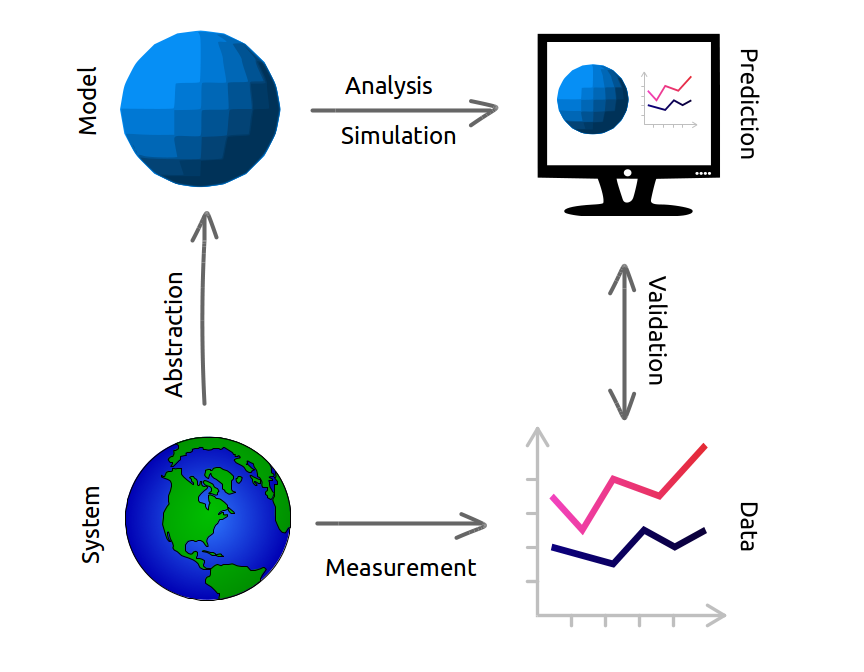System
Abstraction
Analysis + Simulation
Predictions
Overview¶

Figure 1:A schematic for Modeling and Simulating Physical Systems. Source: Book (Modeling and Simulation in Python)
We have a system which represents the state, . We never observe the state. Never. We only have measurements, , which are a sparse representation of our system. i.e., they don’t cover the whole globe at every given point in space and time.
So how do we learn? One way to do so is through mathematical modeling:
Can I recreate what I can measure?
Does what I create make sense and can I explain it?
Note: that second step is what I would separate learning from estimation/predictions. I can easily construct a data-driven model which can emulate something given data. But I don’t consider it really learning unless I have asked a question first and I feel happy with my answer.
Example:
Can we produce a similar density?
Can I generate samples that look like what I measure?
Is there a covariate that can improve our predictability?
Can I explain my process parameterization?
If I add or remove components of my model, does it increase or decrease the predictability or maximize/minimize some given criteria?
What can go wrong¶
Data, ¶
None
Sparsity
Missingness (MCAR, MAR, MNAR)
High-Dimensional
Uncertain
Domain, ¶
Outside Spatiotemporal Convex Hull
Inside Spatiotemporal Convex Hull
Irregular Hull Shape
Unstructured Shape, i.e., point clouds
Transformation, ¶
Unknown
Incorrect, i.e., model specification
Approximate (incomplete)
Expensive (computation, Memory)
Uncertain
Learning, .¶
Solution Exists?
Can We find the Solution?
How do we find the solution?
How do we know we’ve found the solution?
How fast can we find the solution?
Where do we start?